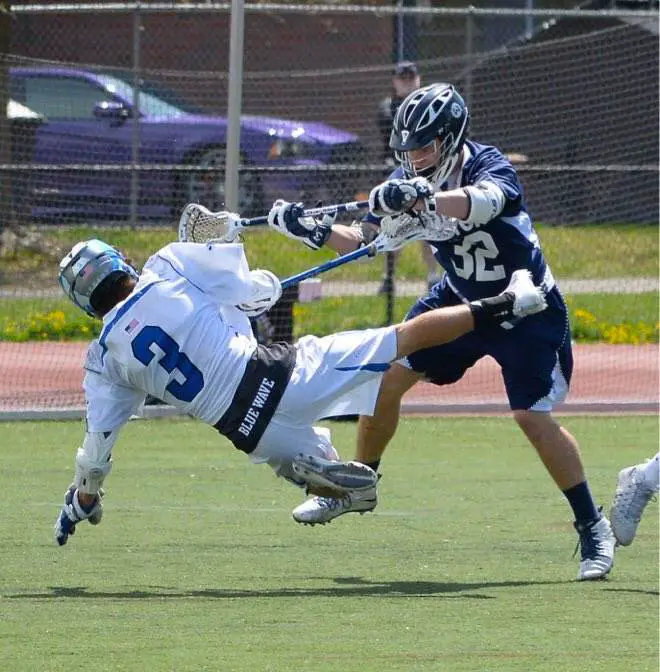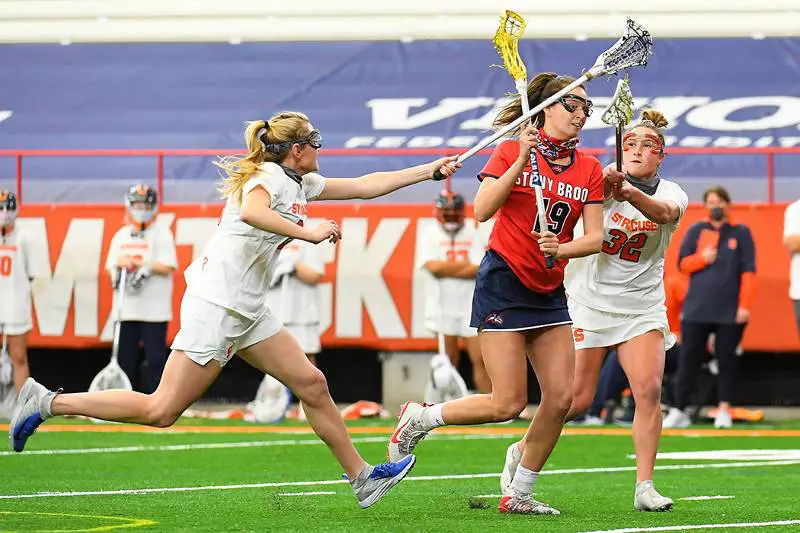

Giving penalties is an important component of every sport. It ensures the proper rules are administrated as well as protects players’ safety. Since sports have different penalty systems, today let’s talk about how penalties work in lacrosse. In situations where a penalty is utilized during a game, the player will face a time suspension, which is known as “man-down” for the defense and “man-up” for the offense.
Man down and man up are essentially mirror terms. Man-down means the defense team will be playing with a man disadvantage due to a penalty against their team. In reverse, man-up refers to the offense team finding themselves with a man advantage, also known as power play or extra-man opportunity. The length of time suspension is subject to the type and severity of the foul. It’s possible to have a maximum of three players serving time suspension at the same time.
Man up and man down serve an important role in every team’s strategy. Often they could lead to unexpected results that affect the outcome of a game. Hence players will need to understand how to hold the fort or seize the opportunity depending on their situations and positions.
Without further ado, let’s jump in and explain every aspect of man up and man down you need to know.
It’s important to know that there are different levels of penalties depending on the severity and perceived intent. Broadly speaking, there are two buckets of fouls, personal fouls and technical fouls. The penalty for personal foul results in a 1-3 minute suspension whereas the penalty for a technical foul could be either a 30-second suspension or a transfer of possession.

Subject to the official’s judgment, the less severe a penalty is, the lesser the time suspension the player will face. However, in most cases, personal fouls are considered more severe than technical fouls, because personal fouls are often caused by illegal physical contact or illegal equipment use.
Hence to reflect the severity of a personal foul, the 1-3 minute time suspension is non-releasable, meaning the offending player needs to serve the full length of time even if a goal is scored. A non-releasable personal foul could often drastically change the development of a game since your team will suffer a man-down situation regardless of the circumstance.
On the opposite, a releasable penalty is relatively less painful. Although the team will still suffer a man-down situation, the penalty will expire immediately as soon as a goal happens.
After a penalty is given, the offending player goes inside the penalty box for the entire duration of the suspension. The penalty box is an area of the lacrosse field located in front of the scores table and outside the sideline at midfield. It will technically sit within the substitution box that stretches 10 yards in total, 5 yards each on both halves.
While inside the penalty box, the player isn’t just taking a rest and does whatever he wants. He has to crouch down and sit on one knee during the time suspension.

As you spend more time doing practice drills, you would learn 6v5 is a common drill during practice where the offense has 6 players and the defense has 5 players. It trains defensive players to communicate and maintain defense formation during a man-down situation. And when players talk about man down, they are most likely referring to man down defense.
But is it ever possible to have an offense man-down?
Yes, it’s possible although pretty uncommon. An offense man-down means the offense team is at one man disadvantage against the defense team. It could happen in a scenario where one player on your team gets a personal foul with less than a minute left. Now your team is playing man-down defense. Somehow, your team was able to regain the ball possession in less than 20 seconds and now you need to score 1 more goal quickly to catch up to your opponent.
Depending on how long the time suspension is and how quickly your team can get the ball back, an offense man down is pretty plausible.
In the previous section, we said the time suspension of personal foul ranges from 1 to 3 minutes. Then the question becomes, is it possible for a team to suffer man down for the entire game due to one player?
The answer is no. Lacrosse is different from sports like soccer where a red card could result in a team playing with man up for the rest of the game. The maximum man down a team could suffer is the 3-minute non-releasable penalty.
However, it’s possible for a team to be continuously man-down due to a series of fouls. Do note, if a player receives 5 personal fouls during one game, he will likely result in an ejection.

Before we go into man up and man down specifically, let’s first unpack how defense works in the most basic terms. In a normal situation, lacrosse is a 6 versus 6 game. A set of offensive players that consist of three middies and three attackmen play against three opponent middies and three opponent defenders plus the opponent goalie.
Since the goalie is bounded by the crease so s/he can only protect the goal or clear the ball in defense. Therefore, the balance between offense and defense remains until a penalty is given. Let’s now move on to man-up and man-down.
Without going too in-depth, on a high level, here are some things you should know when your team is in a man-up situation.
When your team is playing man-up, it drastically increases the success of scoring goals. By working as a unit, six offensive players take advantage of the gaps exposed in the opponent’s defense to find opportunities. Some of the common strategies include wheel plays, triangle rotation and 1-4-1 man-up play. Check them out in real action here.
In essence, these strategies all share two fundamentals: 1. Quick ball movements to lure the opponents to make mistakes 2. One player short forces defense players to stay tight around the goal leaving offensive players free to shoot long distance from up field.
If you find yourself in a men-down defense, does it mean you don’t stand a chance? The answer is no. Although you will be at a disadvantage, a common strategy in men-down defense is to stall and buy yourself time.
By clustering around the goal, defensive players keep offensive players away leaving no openings for them to get close to the goal or get open for shots. The intention here is not to regain possession but to let the shot clock run in order to get their sixth player back on the field.
In other words, the more time the offense spends passing the ball around, the more beneficial it is for the defense team as they stall and kill penalty time.
I hope this post provided you with a good understanding of what man up and man down mean and their implications. Essentially, this rule is introduced to promote a more fair play as having a player short puts your team in a precarious position.
That said, if you do find yourself in either situation, the best you could do is to capitalize on the opportunity and stick to your team’s strategy as well as you can.